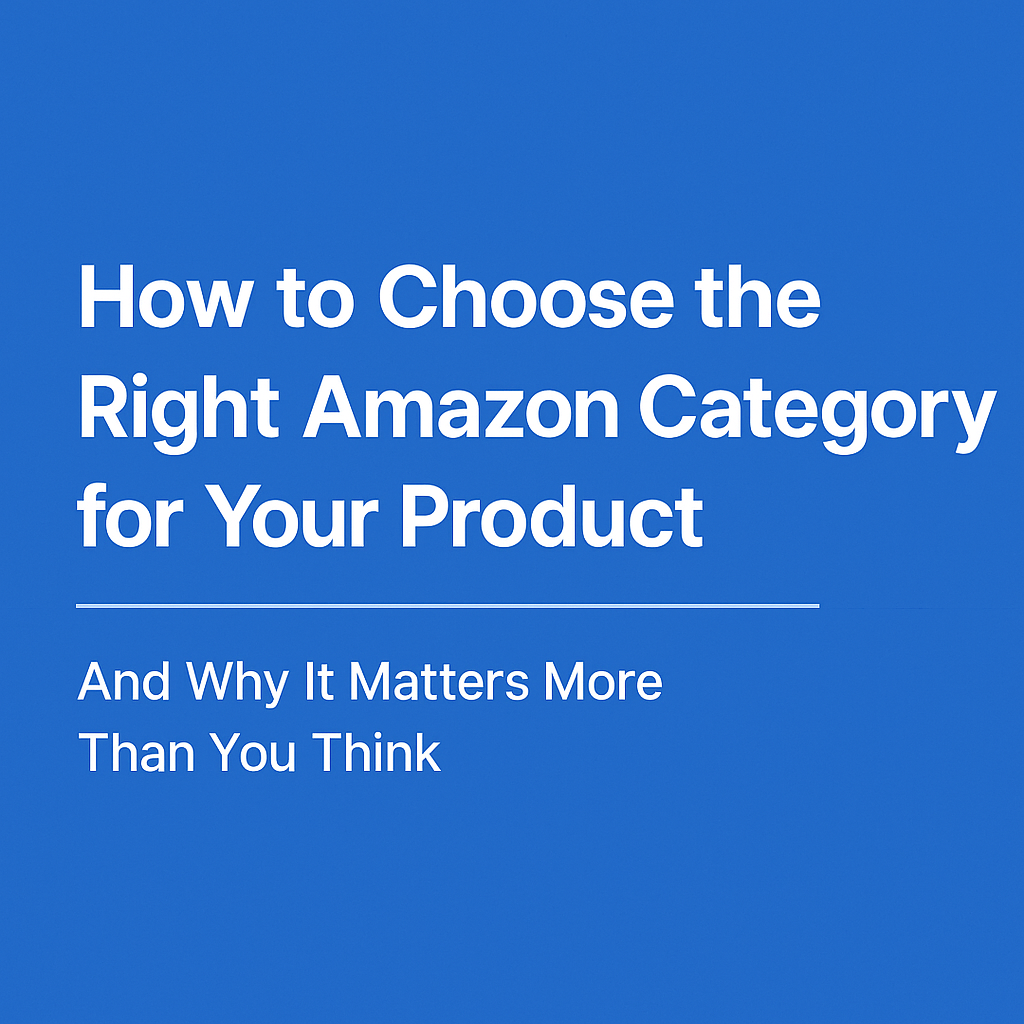How to Choose the Right Amazon Category for Your Product (And Why It Matters More Than You Think)
At Pulse Seller, we’ve helped brands fine-tune their listings—and time and again, we’ve seen how powerful category selection can be when it’s done right.
Why Category Choice Matters
- Search Relevance: Amazon’s algorithm favors listings that align tightly with shopper intent. A mismatched category can throttle your impressions.
- Competition Level: Some categories are so saturated that it’s nearly impossible to rank without an oversized budget.
- Sales Velocity & Traffic: Choosing a lower-competition category with healthy buyer traffic can drastically improve your product’s organic growth.
- Program Access: Some programs—like Subscribe & Save or Category-Specific Coupons—are only available in certain categories.
Step 1: Research Category Options
Start by identifying all possible categories that your product could reasonably fit into. Some products fit naturally into one category. Others have options—and that’s where opportunity lives.
How to Research:
- Go to your top 3 competitor listings.
- Scroll down to the “Product Information” section and look for:
- Best Sellers Rank (BSR)
- Category path
- Note whether they’re in the same category. If not, dig deeper—are some sellers exploiting less competitive subcategories?
Tools to Use:
- Amazon Seller Central → Product Classifier (when listing a product)
- Jungle Scout / Helium 10 → Use “Xray” or “Black Box” to see what categories top-selling ASINs are in.
- Keepa → Use to analyze BSR over time and see how products perform in different categories.
Step 2: Evaluate Category Traffic & Sales Volume
Once you have a shortlist of categories, you need to validate how much buyer demand and traffic exists in each.
How to Analyze:
Use Helium 10’s Black Box or Jungle Scout’s Category Research
- Look at average monthly sales, search volume, and competition for top keywords in that category.
Use Brand Analytics (if enrolled in Brand Registry)
- Navigate to: Reports > Brand Analytics > Search Term Report
- Identify what keywords are driving purchases in the category.
Look at BSR and Number of Reviews
- Products with high BSR and low review count = lower competition.
- If you see dozens of products with 5,000+ reviews, it’s likely a “red ocean.”
Step 3: Analyze Competition
Not all competition is created equal. You want to gauge whether the category is dominated by household names, or if there’s room for emerging brands.
Look for:
- Brand monopolies: Is one brand taking 3+ top spots?
- Review density: Are you competing with 500-review listings or 5,000-review ones?
- Price point clustering: Are there gaps in the pricing ladder you could exploit?
Step 4: Decide Where to List
Once you’ve done your research, ask:
- Which category has strong buyer intent but manageable competition?
- Is your product aligned with the top keywords in that category?
- Are you willing to tailor your title, bullets, and images to win in that category?
If you’re not confident, this is where expert input makes all the difference. At Pulse Seller, we run category simulations, test parent-child variations, and even conduct soft launches in multiple subcategories before scaling.
Pro Tips (Do’s and Don’ts)
DO:
- Use a Category Listing Report: Go to Seller Central > Help > Contact Us > “Get Category Listing Report” to request access. This lets you see your current listings and their category nodes.
- Test Parent-Child Structures: If you have variations, test them across multiple subcategories to gauge traction.
- Check if your product is “gated” in certain categories before choosing.
DON’T:
- Choose based on gut feel or “where competitors are.”
- Pick a high-traffic category without checking competition density.
- Change your category repeatedly without monitoring BSR and conversion trends.
Let Pulse Seller Help You Win
Struggling to decide where your product fits best? Pulse Seller’s team of Amazon growth strategists can run a Category Opportunity Analysis—a data-driven review of which categories will give your product the best chance to rank, convert, and scale.
Click here to schedule a free strategy call.
We’ll walk you through:
- Top category and subcategory options
- Keyword alignment and sales opportunity
- Competitor positioning
- Go-to-market structure
Choosing the right category isn’t just step one—it’s the launchpad for every successful Amazon campaign. Don’t guess. Let’s make the smart move together.
Pulse Seller
Empowering brands to launch, rank, and scale on Amazon.
